3.4b - RAID: Professor Messer
Drive configuration
Redundant Array of Independent Disks (RAID)
RAID: Technology used to combine multiple hard drives into a single unit for improved performance and redundancy.
THIS IS NOT A BACKUP - RAID uses data that is actively retrieved or stored.
RAID 0 (Striping)
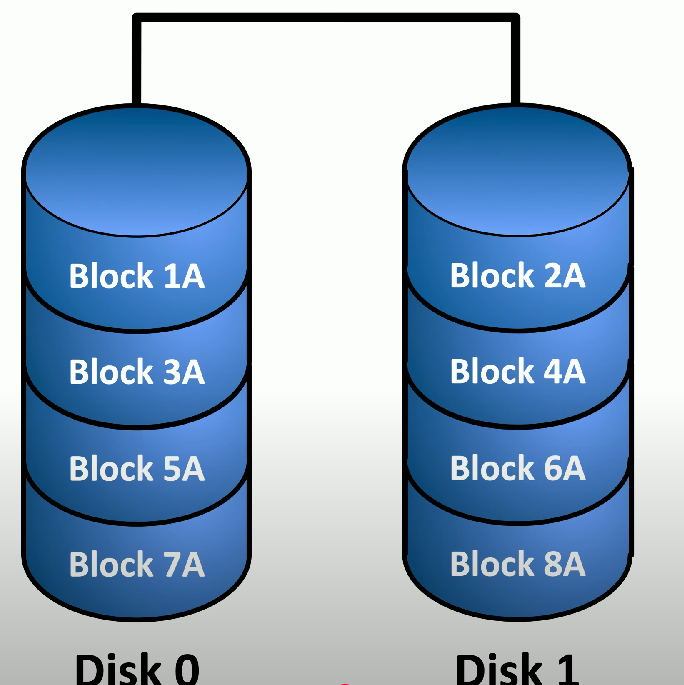
RAID 0 (Striping): RAID system that takes all available data and splits it evenly onto eight separate blocks (for two hard disks).
Enhances performance significantly by allowing both simultaneous reading and writing, but it provides no redundancy; if one disk fails, all data in the array is lost.
Always think of RAID 0 as 0 redundancy.
RAID 1 (Mirroring)
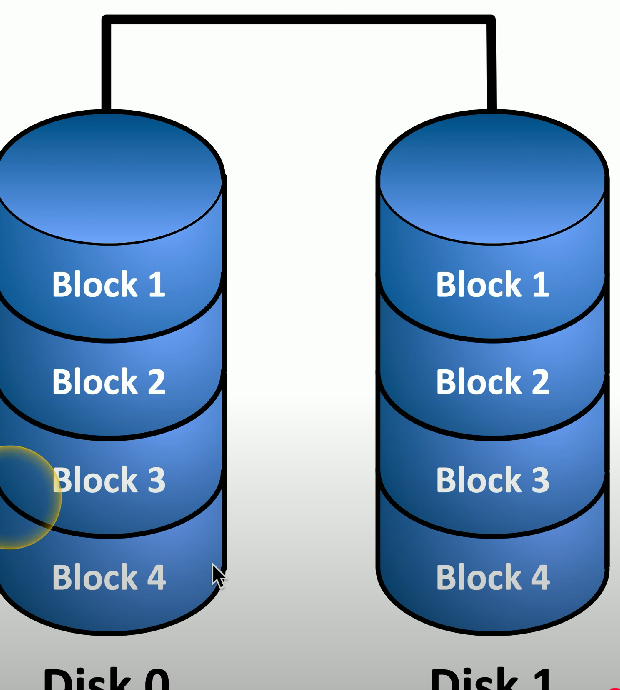
RAID 1 (Mirroring): RAID system that duplicates files between two or more physical drives.
High disk utilization - every file is duplicated, so it requires double disk space compared to RAID 0.
High redundancy - drive failure results in minimal data loss since an exact copy exists on another drive.
RAID 5 (Striping with parity)
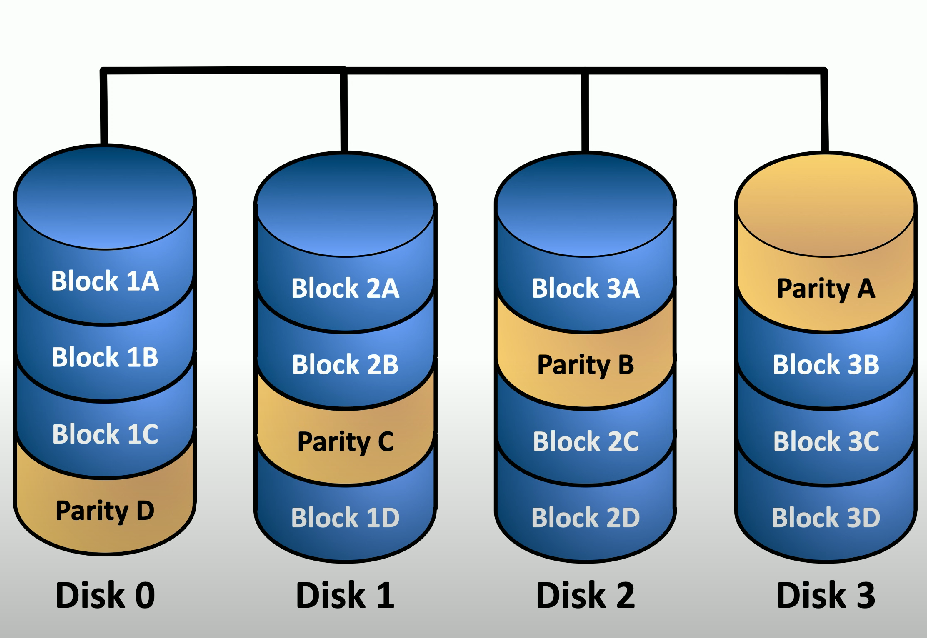
RAID 5 (Striping with parity): RAID system that separates files into blocks and distributes them across multiple drives, while also storing a single parity block.
Efficient use of disk space - files aren’t duplicated, but space is still used for parity
High redundancy - data is available in each drive after failure, but parity calculations may affect performance.
RAID 6 (Double striping with parity)
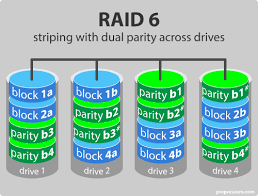
RAID 6 (Double striping with parity): RAID system that separates files into blocks and distributes them across multiple drives, while also storing two parity blocks.
High redundancy - two drives can be removed with no effect on disk space, but additional parity calculations may slow performance.
More complex compared to RAID 5.
RAID 10/RAID 1+0 (A stripe of mirrors)
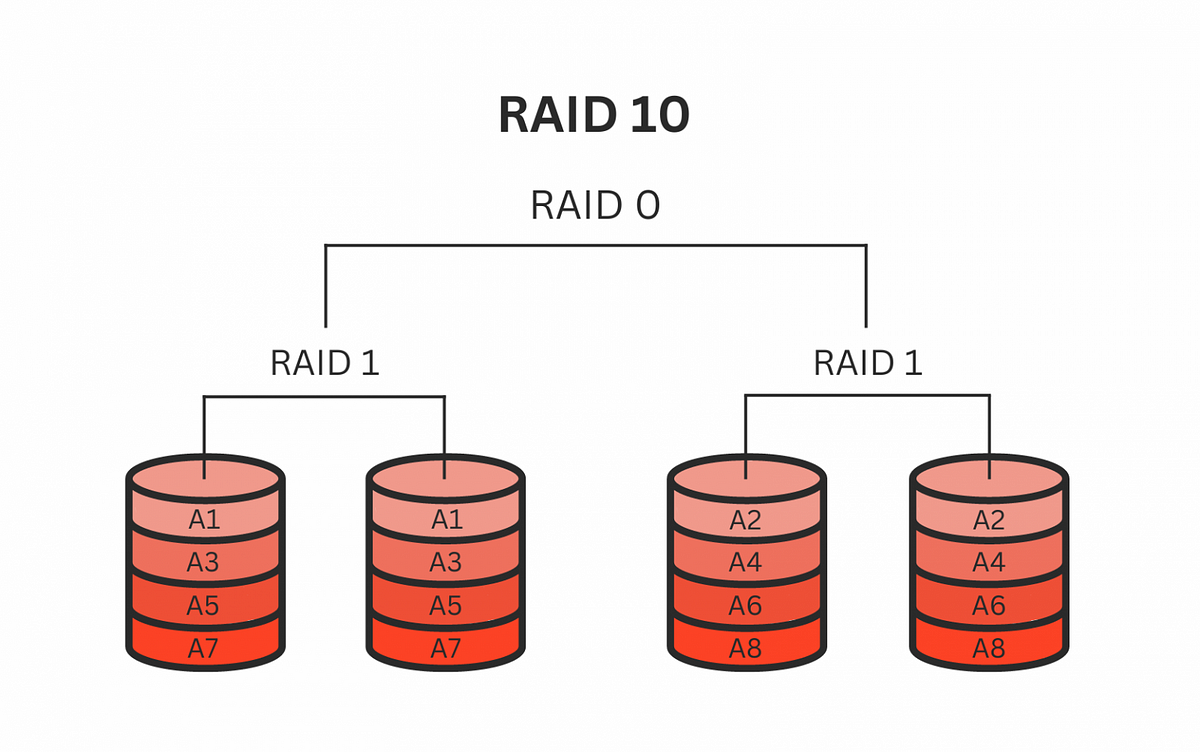
RAID 10 (A stripe of mirrors): Stores all the data on one single drive (RAID 0), but provides a mirror for each of those single drives (RAID 1).
Requires at least 4 drives.
High redundancy, high speed
Requires 4 drives - large storage space required.